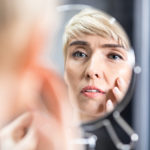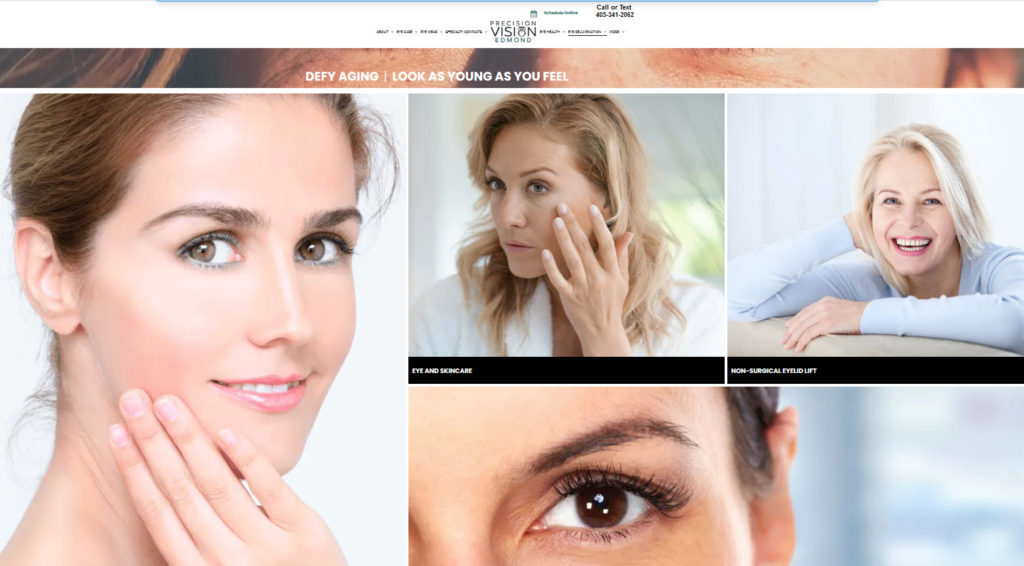By Selina R. McGee, OD, FAAO

Jan. 20, 2021
Aesthetic optometry is a place where form meets function in optometry, in which cosmetic concerns frequently come together with medical eyecare needs. Here is the medical eyecare I provide related to aesthetic optometry that is helping me grow my practice.
How Big an Opportunity is this for Patients & Practice?
I currently perform Intense Pulse Light (IPL), Radiofrequency (RF) and Neurotoxins/Botox procedures. These procedures make up about 10 percent of our overall revenue, but our goal is to get that percentage up to 30 percent over the next three years. There is a great incentive for us to do this, both from a patient care and profitability perspective. All of these procedures are cash-pay only, as none are reimbursable by insurance.
I most often present aesthetic optometry-related medical eyecare as three key opportunities: Skin texture improvement (IPL), skin tightening (RF) and eye wrinkle reduction (neurotoxins/Botox).
Instrumentation Investment
For IPL treatments, I purchased the Optima IPL (Lumenis) for around $50,000. I made this purchase by taking out a loan requiring monthly payments of around $1,200. I only needed one patient a month to cover that cost.
The maintenance fees on instrumentation like the Optima IPL can often be more costly long term than the instrument itself, and is important to factor in when looking at pro forma. My yearly maintenance contract for the Optima IPL is almost $13,000. So if I treat two patients per month, I break even. I set a goal of one patient per week that I will use the Optima IPL to treat.
For radiofrequency procedures, I have a TempSure by Cynosure. I bought this instrument for around $100,000 after taking out a loan with monthly payments of around $1,300 monthly and a maintenance contract that is $8,000 annually. I need two patients per month to break even from this investment. To profit from it, I set a goal of one new patient weekly treated by use of this instrument.
Help Patients Live Their Best Lives
Medical eyecare procedures related to aesthetic optometry are value-added services for our patients that help them live their best lives. These procedures also provide much-needed results for patients wishing to defer blepharoplasty.
Due to delicate eye tissue anatomy and physiology, the eyes are the first part of our face that ages. Building collagen is important, as well as photo rejuvenation due to sun damage, for our eyes to look their best. IPL (great for improving skin texture and treating photo-damage and rosacea) and RF (great for skin tightening) can also be utilized to help our dry-eye population. A win-win for both patient and practitioner.
Aesthetic optometry is not a stretch for optometry. Many patients wear eyeglasses and contact lenses, both of which can aesthetically enhance or change how a person looks. We also utilize a microscope (our slit-lamps) to assess patients’ skin, lashes and lid positions.
Check First with Your OD State Board
We recommend checking with your state board and your professional liability insurance carrier to verify that these procedures (Intense Pulse Light (IPL), Radiofrequency (RF) and Neurotoxins/Botox) are permitted under the optometry laws and regulations of your state.–ROB Editors
Educate Patients First on Easy Fixes
A practice’s first steps into aesthetic optometry can be small, and begins with patient education. Build your patients’ knowledge about the cosmetic ingredients that are putting their eye comfort and/or eye health at risk. Many of these ingredients are toxic to the ocular surface.
Another discussion point is how to limit sun damage to the skin around the eyes. Five to 10 percent of skin cancer occurs on the eyelids even though the skin on our eyelids only comprises 1 percent of the skin on our bodies. I prescribe sun lenses and sunscreen to every patient. Cosmetic lines we sell in the office are Eyes Are the Story and Epionce. The ROI is typically 50 percent of the product, meaning our mark-up is 2x, so if we spend $30 on a product, then we sell it for $60. However, this investment in inventory to sell in the office is more about offering something to patients where I control the narrative–keeping them in my practice–rather than on direct profits from sales.
For patients interested in lengthening lashes, we prescribe Latisse, with caution, as there can be significant side effects that patients are not typically aware of. Upneeq, a recently released prescription medication for acquired blepharoptosis, is also a prescription product available to our patients. Upneeq is a great way to achieve results non-invasively for patients who want their eyes to have a more open look.
Prescribing judiciously and educating patients on potential side effects of aesthetic optometry-related medical eyecare procedures is essential, especially for our dry-eye patients.
In addition to conversations with patients, I use an intake form, which you can download HERE, to uncover aesthetic optometry-related medical eyecare that patients could benefit from. This can be an easier way to “slide” into these conversations with patients so that it doesn’t feel awkward.
Build a Relationship with an Oculoplastic Surgeon
Oculoplastic surgeons are ophthalmology-trained physicians that do a fellowship in plastics, which can be 1-2 more years of training depending on the program. I work closely with the oculoplastic surgeon I developed a professional relationship with because so many patients need blepharoplasty, brow lifts and lateral strip tarsorrhaphy, among other procedures.
Other Articles to Explore
Look closely in your area for a surgeon, and don’t be shy about reaching out to them and letting them know you would like to work with them. You can and should build the same type of relationship with an oculoplastic surgeon that you have with a local cataract surgeon(s). Collaborative care gives our patients the best possible outcomes and experience.
Train Your Staff to Support You in Aesthetic Optometry Medical Eyecare
Team knowledge is integral to adding aesthetic services successfully. Often, my team has already prepped the patient for what we offer before I meet the patient in the exam room. I just prescribe and perform the services. They complete the consent forms with the patient, take photographs and educate the patient on pre- and post-op care. They also usually review the cost of these procedures with the patient. We have a “menu” for aesthetic optometry medical eyecare services, and many procedures are bundled.
Market Medical Eyecare Services
I have an entire page on my practice website that is dedicated to aesthetic optometry-related medical eyecare under the title “Eye Rejuvenation.”
Accommodating a Growing Practice Niche
I’m in the process of building my own freestanding building that will have a dedicated aesthetic optometry suite, so I can expand these services to our patients. My projected move-in date is April 2021.
My patients appreciate the knowledge we offer, which gives them the ability to make educated decisions about their appearance. So many times people sabotage their eye health, or make decisions about their long-term health, without having all the information. I love that I am able to help patients feel good about themselves while taking care of their vision and eye health for life!
 Selina R. McGee, OD, FAAO, is the founder of Precision Vision of Edmond in Oklahoma and is also immediate past-president Oklahoma Association of Optometric Physicians. To contact her: selinarm@yahoo.com
Selina R. McGee, OD, FAAO, is the founder of Precision Vision of Edmond in Oklahoma and is also immediate past-president Oklahoma Association of Optometric Physicians. To contact her: selinarm@yahoo.com


























